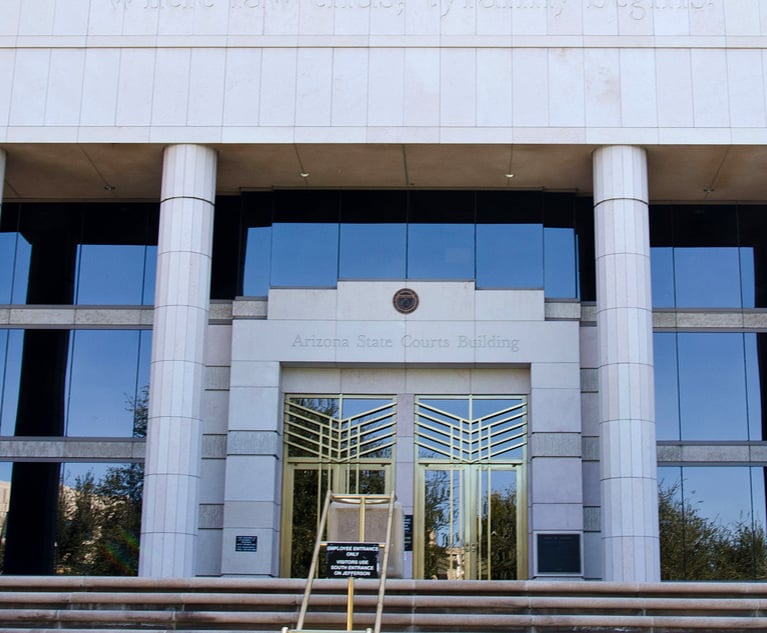From the Editor-in-Chief: A Rising Tide Lifts Most Boats
Demand and rate growth buoyed most Am Law 100 firms.
April 23, 2019 at 09:32 AM
4 minute read
 Gina Passarella, Editor-in-Chief of The American Lawyer.
Gina Passarella, Editor-in-Chief of The American Lawyer.
"And you get a car, and you get a car and you get a car!"
As I went through the results of our Am Law 100 reporting, I couldn't help but think of a classic Oprah Winfrey giveaway special. Like her shows where guests would all receive extravagant gifts, nearly all of the nation's top-grossing firms took home big gains in top-line revenue and partner profits in 2018.
 How does your firm's performance compare to peers & competitors? Get the Am Law 100 Data exclusively on Legal Compass.
How does your firm's performance compare to peers & competitors? Get the Am Law 100 Data exclusively on Legal Compass. But the Oprah analogy isn't quite fair, as it would suggest these firms didn't work exceptionally hard to earn those premiums. Only seven of the 100 largest firms saw their revenue decline in 2018. About 60 percent saw growth of 5 percent or more. Last year's financial results took some of the wind out of the argument that increased stratification among segments of the top 100 exists.
But there are clearly standouts, such as Kirkland & Ellis adding nearly $600 million in revenue in 2018, on top of adding almost the same the year before that. There are only a handful of firms that are pulling in such dramatic figures. In fact, if firms at all aim to move into a certain Am Law 100 tier (I'm not suggesting they should), many may be disappointed. Moving up in the rankings when everyone is having such a great year is difficult to do. Only 31 firms improved their ranking, and typically by only a slot or two. Those who saw big gains in rank did so via merger or close ties to the tech industry.
We saw California firms and those that represent major tech companies have a strong year, as did firms heavy in the M&A and private equity space (read Christine Simmons' piece on how Wachtell and Cravath capitalized on that momentum). Litigation and other countercyclical practices helped firms further down the Am Law 100. Rate increases helped just about everyone.
Within 2018′s stellar returns there is plenty of nuance. As my colleague Nicholas Bruch of ALM Intelligence told me, evidence of the stressors on demand, including alternative legal service providers, the Big Four, technology and client competition, are in the numbers. In the years leading up to the recession, year-over-year revenue growth was consistently in the 12 to 14 percent range. This year, 10 years after the recession, we are celebrating 8 percent as a watershed moment.
Dan Packel breaks down the story behind the numbers and how various market segments fared in our overview story. We also have a look at how a few firms were able to turn the Great Recession into a great opportunity. And in an interesting finding in the numbers over 10 years, we see how the top 50 have shrunk in every major U.S. market and grown in every major international market, creating significant implications for profitability. On top of that, we tally the toll that discounts and writedowns have taken on the Am Law 100′s top and bottom lines.
We offer a big congratulations to the Am Law 100 for a successful year. We will continue to cover and analyze the opportunities and challenges in the market, as well as what these numbers may look like when a recession inevitably hits. But as we note within this issue, firm leaders are feeling that if they can get one or two more strong years under their belts, they can weather any pending storm just fine.
This content has been archived. It is available through our partners, LexisNexis® and Bloomberg Law.
To view this content, please continue to their sites.
Not a Lexis Subscriber?
Subscribe Now
Not a Bloomberg Law Subscriber?
Subscribe Now
NOT FOR REPRINT
© 2025 ALM Global, LLC, All Rights Reserved. Request academic re-use from www.copyright.com. All other uses, submit a request to [email protected]. For more information visit Asset & Logo Licensing.
You Might Like
View All
Law Firms Expand Scope of Immigration Expertise Amid Blitz of Trump Orders
6 minute read
Am Law 100 Lateral Partner Hiring Rose in 2024: Report

KPMG's Bid to Practice Law in U.S. on Indefinite Hold, as Arizona Justices Exercise Caution

JCPenney Seeks Return of More Than $1.1M From Jackson Walker For Bankruptcy Work
3 minute readTrending Stories
- 1'Incredibly Complicated'? Antitrust Litigators Identify Pros and Cons of Proposed One Agency Act
- 2'A Warning Shot to Board Rooms': DOJ Decision to Fight $14B Tech Merger May Be Bad Omen for Industry
- 3Securities Action Targeting Polestar Alleges Mistakes in SEC Filings
- 4Conspiracy Suits Against Quinn Emanuel, Roc Nation Moved to Federal District Court
- 5'Knowledge of Mismatch:' Fed Judge Offers Guidance on How to Hold Banks Accountable for Erroneous Transfers
Who Got The Work
J. Brugh Lower of Gibbons has entered an appearance for industrial equipment supplier Devco Corporation in a pending trademark infringement lawsuit. The suit, accusing the defendant of selling knock-off Graco products, was filed Dec. 18 in New Jersey District Court by Rivkin Radler on behalf of Graco Inc. and Graco Minnesota. The case, assigned to U.S. District Judge Zahid N. Quraishi, is 3:24-cv-11294, Graco Inc. et al v. Devco Corporation.
Who Got The Work
Rebecca Maller-Stein and Kent A. Yalowitz of Arnold & Porter Kaye Scholer have entered their appearances for Hanaco Venture Capital and its executives, Lior Prosor and David Frankel, in a pending securities lawsuit. The action, filed on Dec. 24 in New York Southern District Court by Zell, Aron & Co. on behalf of Goldeneye Advisors, accuses the defendants of negligently and fraudulently managing the plaintiff's $1 million investment. The case, assigned to U.S. District Judge Vernon S. Broderick, is 1:24-cv-09918, Goldeneye Advisors, LLC v. Hanaco Venture Capital, Ltd. et al.
Who Got The Work
Attorneys from A&O Shearman has stepped in as defense counsel for Toronto-Dominion Bank and other defendants in a pending securities class action. The suit, filed Dec. 11 in New York Southern District Court by Bleichmar Fonti & Auld, accuses the defendants of concealing the bank's 'pervasive' deficiencies in regards to its compliance with the Bank Secrecy Act and the quality of its anti-money laundering controls. The case, assigned to U.S. District Judge Arun Subramanian, is 1:24-cv-09445, Gonzalez v. The Toronto-Dominion Bank et al.
Who Got The Work
Crown Castle International, a Pennsylvania company providing shared communications infrastructure, has turned to Luke D. Wolf of Gordon Rees Scully Mansukhani to fend off a pending breach-of-contract lawsuit. The court action, filed Nov. 25 in Michigan Eastern District Court by Hooper Hathaway PC on behalf of The Town Residences LLC, accuses Crown Castle of failing to transfer approximately $30,000 in utility payments from T-Mobile in breach of a roof-top lease and assignment agreement. The case, assigned to U.S. District Judge Susan K. Declercq, is 2:24-cv-13131, The Town Residences LLC v. T-Mobile US, Inc. et al.
Who Got The Work
Wilfred P. Coronato and Daniel M. Schwartz of McCarter & English have stepped in as defense counsel to Electrolux Home Products Inc. in a pending product liability lawsuit. The court action, filed Nov. 26 in New York Eastern District Court by Poulos Lopiccolo PC and Nagel Rice LLP on behalf of David Stern, alleges that the defendant's refrigerators’ drawers and shelving repeatedly break and fall apart within months after purchase. The case, assigned to U.S. District Judge Joan M. Azrack, is 2:24-cv-08204, Stern v. Electrolux Home Products, Inc.
Featured Firms
Law Offices of Gary Martin Hays & Associates, P.C.
(470) 294-1674
Law Offices of Mark E. Salomone
(857) 444-6468
Smith & Hassler
(713) 739-1250










